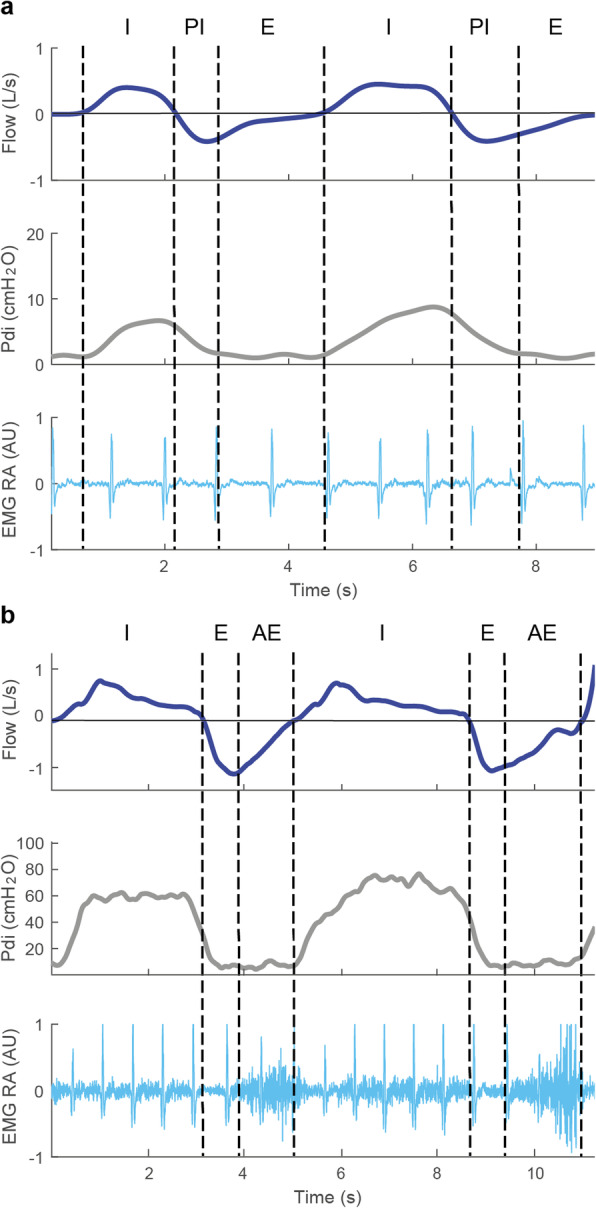Fig. 2.

Breathing phases. Flow, transdiaphragmatic pressure (Pdi) and electromyography of the rectus abdominal muscle (EMG RA, in arbitrary units; note that this signal is disturbed with electrocardiogram [EKG] artifacts) during tidal breathing at rest (a) and during high resistive loading (b) in one healthy subject. Vertical dashed lines mark the onset of the different breathing phases. Inspiration (I) is characterized by a steady increase in Pdi and positive flow, and is present during both tidal breathing and high loading. The gradual decrease in Pdi during expiratory flow in (a) is consistent with post-inspiration (PI). Note that the rate of decline in Pdi is much more rapid during high loading. During tidal breathing (a), expiration (E) is characterized by the absence of Pdi and EMG RA activity and occurs after post-inspiration. High loading (b) leads to expiration (AE), which can be recognized by the increase in EMG RA activity. Also, expiration directly follows the inspiratory phase
